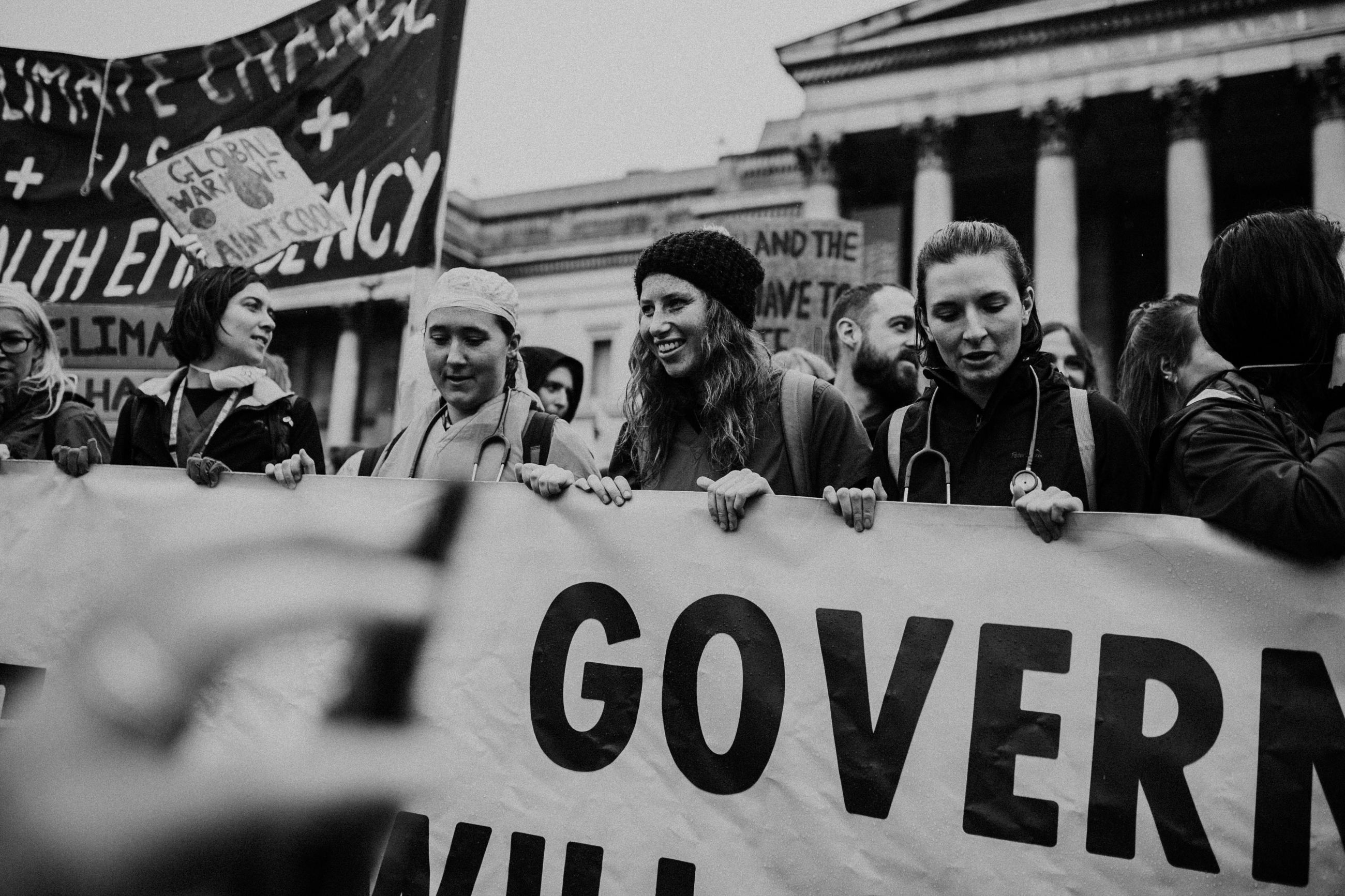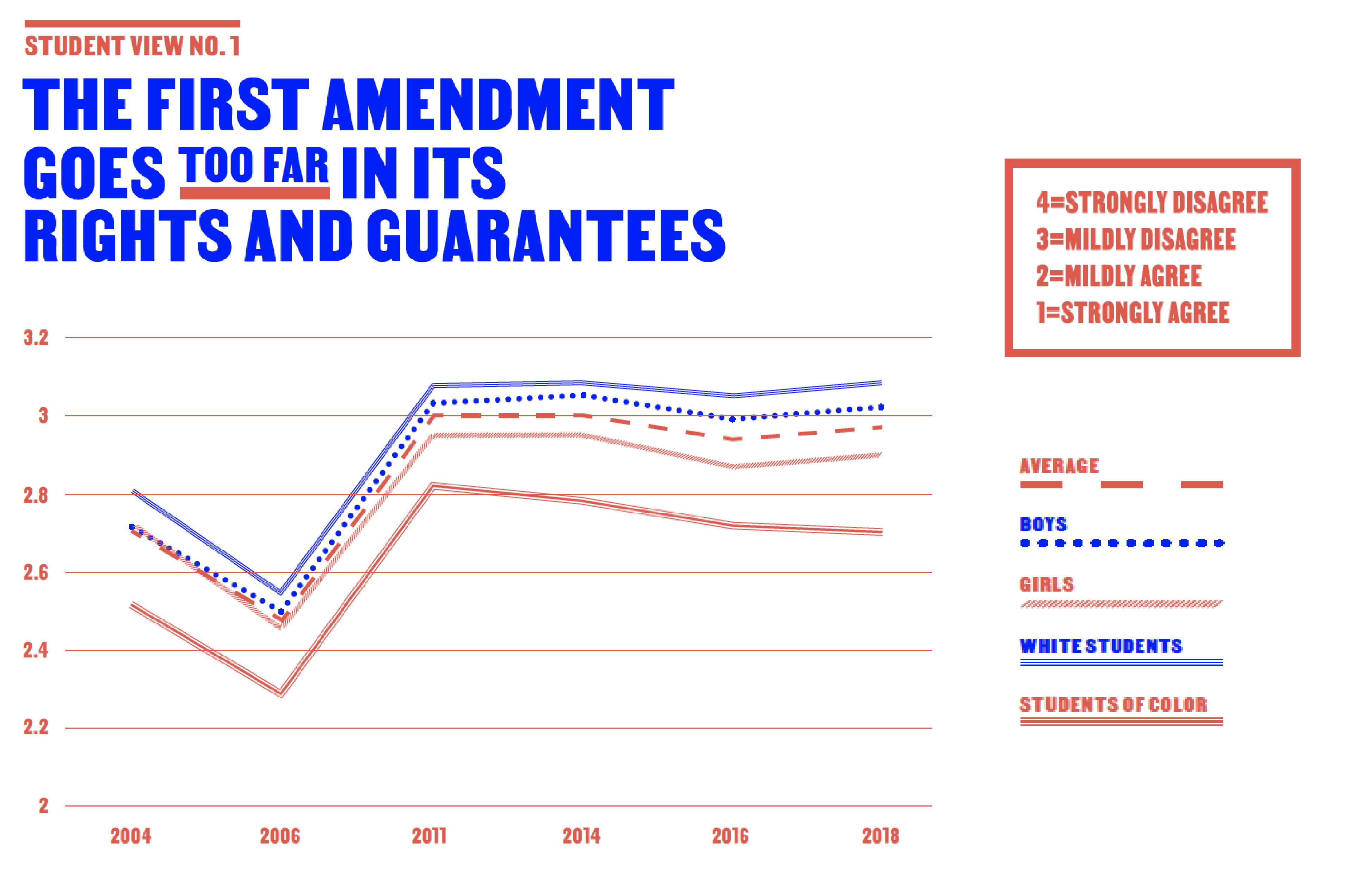
Hear us roar: High schoolers are more supportive of the First Amendment over time, but girls and students of color are less enthusiastic than others
On November 20, Knight Foundation released a new report, “High School Student Views On The First Amendment: Trends in the 21st Century.” Knight’s Evette Alexander shares details below. For more insights, read this post by Dr. Emily Chamlee-Wright and this post by Joan Donovan.
During one of the largest youth movements in history, American high schoolers joined their peers across the globe this September in school walkouts and mass protests to demand action on climate change. In New York, they chanted: “We will make them hear us,” and many girls wore green hair and makeup to express solidarity with the environment. For those wondering if free speech and expression are safe with the next generation, high schoolers in 1,000 cities across all 50 states answered at an unprecedented volume.
High school is a transitional experience between childhood and adulthood, marked by increased agency in society. It’s where we begin to flex our constitutional rights–whether we are aware or not–and develop the muscles required for civic engagement and democratic participation as adults. This traditionally meant writing articles in the student paper, forming a club or petitioning school administrators on issues. Nowadays, technology and globalization are changing the scale and the spaces where First Amendment rights play out at a young age.

As students are the future gatekeepers of our democracy, Knight Foundation has taken a deep interest in their attitudes towards the First Amendment. Since 2004, we have commissioned regular “Future of the First Amendment” surveys of high school students’ views on these issues. Now we are publishing a trend analysis of these studies — developed by Northeastern University media and communications professors John Wihbey and Brooke Welles — that examines how student views have changed over the past 15 years.
This latest study reveals that from 2006 to 2011, there was a significant increase in average student First Amendment support that stayed relatively consistent through 2018. Beginning in 2011, however, fault lines between genders and races began widening, with female and students of color more likely to agree that the First Amendment goes too far in its rights and guarantees than their male and white counterparts. This begs the question, what changed in their world at the time that might have created somewhat divergent experiences in relation to speech across gender and race?

Modest but Unequally Distributed Increase in First Amendment Support—With Growing Splits by Gender and Race:

The explanations are likely complex. We do know that, among the many changes in how we live, communicate and relate to each another, one of the most pronounced shifts has been the rise of social media. Facebook ushered in the age of hyper-connectivity by opening membership to the general public in late 2006, moving to the NewsFeed format and introducing the ubiquitous “Like” button. Monthly unique visitors rocketed from 100 million in 2008 to over 700 million in 2011, and most high schoolers became daily social media users between 2009 and 2011[1].
Scholars and researchers have begun to explore how groups such as women and people of color have experienced this change in communication differently. Some have noted that a spike in mental health issues among adolescents, particularly girls, coincides with their widespread adoption of social media. Decades of declining depressive symptoms among teenage girls suddenly reversed course in 2011, and by 2018 they had nearly doubled, growing at roughly twice the rate than that of boys.[2] Studies[3] have also shown that women and people of color are more likely to report online harassment based on their personal traits, suggesting that certain groups may be disproportionately impacted by some of the negative effects of online speech.
During the 15 years of the Knight survey series, social media has become the dominant public forum. High schoolers have been early and heavy adopters of technologies that enable and convey speech, allowing them to raise their collective voices and mobilize around issues across the political spectrum from “pro-life walkouts” protesting abortion to the “march for our lives” for stricter gun control.

Of course, there have been other significant changes to our society—some here to stay, others tied to specific events in our culture and history. This report helps show, over more than a decade of polling, how views are changing. Now we invite researchers, commentators and others both to explore why these shifts may be occurring, and how they might influence the trajectory of the First Amendment in the new century.
YOU MAY ALSO BE INTERESTED IN…
-
Journalism / Report
-
Journalism / Article
-
Journalism / Article
-
Photo (top) by Phil Hearing on Unsplash
[1] Monitoring the Future, 2008-2015
[2] Keyes, K. M., Gary, D., O’Malley, P. M., Hamilton, A., & Schulenberg, J. (2019). Recent increases in depressive symptoms among US adolescents: Trends from 1991 to 2018. Social Psychiatry and Psychiatric Epidemiology.
[3] Pew, 2017
Recent Content
-
Journalismarticle ·
-
Journalismarticle ·
-
Journalismarticle ·






